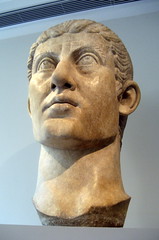Unit 1: BYZANTINE EMPIRE Academic Vocabulary
schism
Justinian's Code
Hagia Sophia
Cyrillic Alphabet
Constantinople
Constantine
Autocrat
Orthodox
Icon
Imperial
| 1617486762 | schism | a permanent split between the Eastern Greek Church and Roman Catholic Church, (n.) a formal split within a religious organization; any division or separation of a group or organization into hostile factions |  | 0 |
| 1617486763 | Justinian's Code | An organized collection and explanation of roman laws for use by the byzantine empire |  | 1 |
| 1617486764 | Hagia Sophia | Most famous example of Byzantine architecture, it was built under Justinian I and is considered one of the most perfect buildings in the world. |  | 2 |
| 1617486765 | Cyrillic Alphabet | An alphabet derived from the Greek alphabet and used for writing Slavic languages |  | 3 |
| 1617486766 | Constantinople | A place previously known as Byzantium which became the capitol of the Roman Empire or "new Rome" |  | 4 |
| 1617486767 | Constantine | (274 CE - 337 CE) Roman Emperor between 306 CE and 337 CE. He issued the Edict of Milan which outlawed the persecution of Christians. He also founded the city of Constantinople, the future capital of the Byzantine Empire. |  | 5 |
| 1617486768 | Autocrat | (adj.) absolute in power or authority |  | 6 |
| 1617486771 | Orthodox | (of a person or their views, especially religious or political ones, or other beliefs or practices) conforming to what is generally or traditionally accepted as right or true; established and approved. |  | 7 |
| 1617486769 | Icon | a painting of Jesus Christ or another holy figure, typically in a traditional style on wood, venerated and used as an aid to devotion in the Byzantine and other Eastern Churches. |  | 8 |
| 1617486770 | Imperial | of or relating to an empire. |  | 9 |

